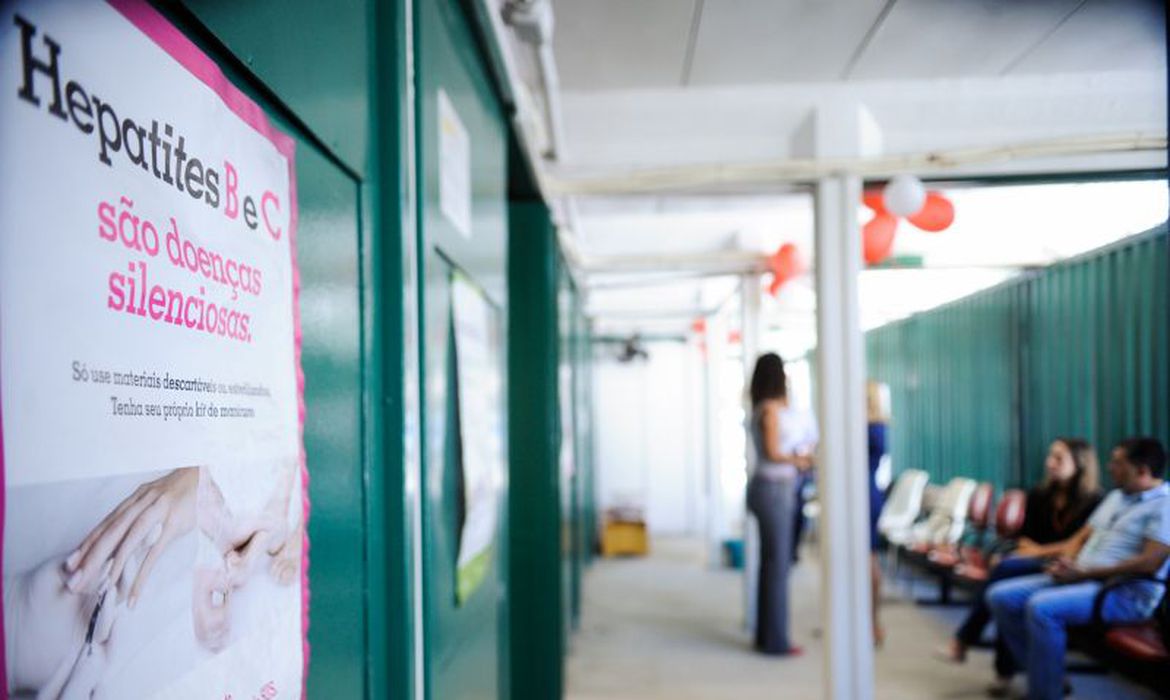RIO DE JANEIRO, BRAZIL – Hepatitis cases dropped in Brazil in 2019, confirming a downward trend in recent years. However, the country still needs to act to achieve the goal of reducing the disease by up to 90 percent and the deaths associated with it by 65 percent by 2030, according to the commitment made in the Global Strategic Plan for Viral Hepatitis.

The Ministry of Health presented the epidemiological bulletin on hepatitis on July 28th.
Type B cases totaled 13,971 in 2019, down from 14,686 the previous year. The number of deaths varied upward from 414 (2017) to 424 (2018). In the regional distribution, the South recorded the highest number of people with the disease (4,529), followed by the Southeast (3,867), North (2,471), Northeast (2,021), and Midwest (1,081).
More men (7,938) than women (6,028) were affected by the disease. In terms of color and race, it was more common in mixed-race individuals (5,637) and whites (5,420) and also occurred in blacks (1,399), Asians (177), and indigenous (125). The primary mode of contagion was sexual (20.4 percent).
Hepatitis C
Hepatitis C cases also decreased between 2018 and 2019, from 27,773 to 22,747. Deaths from the disease also dropped, from 1,720 in 2017 to 1,574 in 2018. Last year, the predominance in terms of territory was found in the Southeast (11,666), followed by the South (7,168), Northeast (1,869), North (1,075), and Midwest (959).
As with other types of hepatitis, the occurrence was higher in men (12,735) than in women (9,996). In terms of color and race, the incidence was higher in whites (11,407) than in the others: mixed-race (6,641), blacks (2,008), Asians (223), and indigenous (46). The main cause was drug use (12.1 percent), followed by blood transfusion (10.3 percent) and sexual intercourse (8.9 percent).
Hepatitis A
The recorded hepatitis A cases decreased from 2,188 to 891, from 2018 to 2019. The most recent death toll refers to 2018 when 28 Brazilians died as a result of the disease, a higher number than the 22 who died in 2017.
The region with the highest number of people with the disease last year was the Southeast (457), followed by the North (151), South (135), Northeast (94), and Midwest (54). In the gender section, the disease affected more men (540) than women (351). In terms of color and race distribution, cases were recorded mainly in whites (353), and mixed-race (326), followed by blacks (55), Asians (14), and indigenous (2).
Hepatitis D
Hepatitis D is less prevalent than the others and fluctuated upwards in 2019 from 151 (in 2018) to 164 cases. The prevalence of the disease was found mainly in the Northern Region (104), but lower in the other regions: Southeast (26), South (19), Northeast (10), and Midwest (5). As in the other subtypes, the occurrence was higher in men (110) than in women (54).
Measures
The Health Regulatory Secretary, Arnaldo de Medeiros, said the portfolio cleared the waiting list for viral hepatitis treatment. The term is used when a certain number of annual treatments are reached that are deemed adequate.
He added that a call was made for over 50,000 treatments, which ensures the supply of the public health system by 2021. In the case of hepatitis B, the medicine stock would be guaranteed until the first quarter of next year.
“The drugs started to be sent monthly, as opposed to every three months before. We did this to ensure greater agility in care. Consequently, this also ensures greater control of stocks and reduces the chance of shortages. The Ministry sends 20 percent in excess of each state’s consumption,” Medeiros said.
The secretary recalled that there is a commitment for a 90 percent reduction by 2030. “This goal will be achieved with a continuous effort from the SUS [National Health System], from our professionals, from our vaccination coverage, from our provision of appropriate treatments,” he said.
What is hepatitis?
Mainly typified by inflammation of the liver, hepatitis is the second largest group of lethal infectious diseases in the world. Hepatitis is caused by viruses, but other conditions, such as excessive consumption of alcoholic beverages, can also cause the disease. Viral hepatitis is divided into five different diseases: type A, B, C, D, and E.
Brazil is part of an initiative created by the W.H.O. called “Global Strategy for the Elimination of Viral Hepatitis as a Public Health Problem”, which aims to reduce new infections by 80 percent and the mortality rate by 65 percent in relation to the current yearly averages.
The types of hepatitis
According to published data, the Ministry of Health distributed 1.9 million doses of the hepatitis A vaccine in 2020. Hepatitis A is food-related, and it generally occurs due to a lack of food hygiene. Hepatitis A is considered a benign disease; however, it can be lethal in older people. Poor health conditions can also spread this variation in the disease.
Hepatitis B has no cure and is a silent disease – transmitted sexually. The SUS provides the hepatitis B vaccine. According to the portfolio, 7.2 million doses of hepatitis B vaccine were delivered to health posts this year. The bulletin states that there are enough drugs in stock to fight hepatitis B to meet demand by the first quarter of 2021.
Hepatitis C, which is also sexually transmitted, has no vaccine. The prophylactic measure recommended by the W.H.O. is the wearing of condoms during sexual intercourse.
Hepatitis B and C can also be transmitted by contact with contaminated blood, which can occur during cosmetic or health procedures if insufficient care is taken. Invasive health procedures using syringes or sharp-edged objects, and the sharing of perforating objects such as nail pliers and needles, can also transmit these two types of hepatitis.
Hepatitis B can also be transmitted during pregnancy or childbirth, but the SUS provides drugs that reduce the chances of transmitting the virus to the baby by over 95 percent.
Source: Agência Brasil

